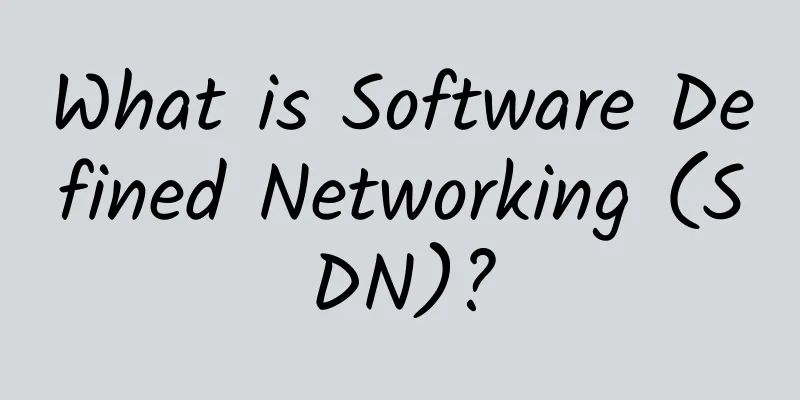5G+AR ushering in a new "blue ocean"

|
In recent years, the development of technologies such as 5G and cloud computing, as well as the outbreak of the epidemic, have jointly pushed the AR industry into a new stage of take-off. The scale of equipment is accelerating, the content themes are becoming increasingly rich, and the growth of users in turn feeds back the richness of content. The AR ecosystem is gradually entering a virtuous circle. 5G helps the AR industry enter the "fast lane" of development The AR industry, which has been "silent" for a long time, may enter the "fast lane" of development. AR is not a new concept. Its technological origins can be traced back to the 1950s and 1960s. In the 1990s, 3D games were launched, but due to the high cost of AR technology and limited computing power of the equipment at that time, AR game products ended in failure, and the first AR craze subsided. In 2014, Facebook acquired Oculus for $2 billion, and AR "hot" hit again. In the following years, AR applications gradually expanded to many new fields, such as urban planning, education, and medical care. Today, AR has begun to bring tangible value to users and consumers around the world. AR has penetrated into all aspects of life, making people's lives richer and work more efficient. At present, AR is becoming increasingly popular around the world. Many start-ups are working hard to develop hardware on the one hand, and are also actively building a complete ecosystem on the other. Among them, the rapid development of the Korean AR/VR industry provides reference significance for the industry: first, there must be a 5G network that can provide an ultimate experience; second, there must be a rich business, such as LG U+, which has cooperated with 24 world-renowned children's publishers to exclusively launch 300 AR English books. It is reported that the AR children's library was used more than 4 million times in 2020; third, there must be a reasonable tariff package design. Correspondingly, during this period, Korean 5G users maintained a high growth rate and traffic consumption surged. This also shows that AR will create more profit channels for operators. Korean operators can even influence other operators through innovative 5G+AR content. AR can not only attract more consumers to upgrade 5G packages, but also bring explosive growth in traffic, thereby promoting the rapid increase in the ARPU value of 5G users and bringing more profit opportunities to operators. In addition, there must be suitable terminals to support AR business. It is understood that there are many types of AR devices at present, with different levels of advancement and application scenarios. However, the current dedicated AR headsets are mainly aimed at the enterprise market, with high prices and low sales; while dedicated AR headsets for consumers have not yet been widely welcomed by the market. Strategy Analytics predicts that with the advent of future consumer-grade headsets, the market size for consumers will show explosive growth. It is expected that by 2026, global shipments of consumer-grade AR headsets will exceed 53 million units, and total revenue will exceed US$30 billion. There is no doubt that with the advent of the 5G era, the integration of AR technology and industry applications is entering an accelerated period. According to Huawei and third-party insight data, by 2025, the market space for AR is expected to reach US$300 billion, and the user scale will reach 1.2 billion. "The encounter between AR and 5G is just in time. 5G ignites AR, and AR illuminates 5G." Cai Mengbo, Chief Marketing Officer of Huawei's Carrier BG, said that 5G+AR is helping global operators and industry partners to open up new business boundaries and stimulate new business growth. From a technical perspective, 5G plays an important role in the evolution of AR. Since 5G can provide deterministic low latency and high-precision positioning, existing AR applications based on Wi-Fi and 4G LTE will be able to provide a better and more stable experience through 5G networks. In addition, Wi-Fi lacks the mobility and coverage of 5G and 4G LTE, and traditional Wi-Fi (Wi-Fi 5/IEEE 802.11ac, etc.) has the problem of uncontrollable latency. In order to expand to a wider market as much as possible, AR applications need to break the constraints of the network, and 5G also requires sufficient network coverage. From the perspective of industry applications, 5G+AR will bring great space. In this regard, David MacQueen, director of VR & AR ecosystem research services at Strategy Analytics, said: "AR has real transformative potential, and its transformative potential has begun to emerge in the enterprise space. Although a few popular AR applications on smartphones hint at the future, the emergence of consumer AR headsets and their deep integration with 5G may bring new use cases by enhancing the real world in vision without hands." As the basic capability of geometric intelligence, AR can incubate thousands of business opportunities, especially in the fields of industry, education, and medical care. For emerging markets, it is also an effective business model to narrow the digital divide. The success of technology is the driving force behind the development of human civilization. With the gradual popularization of 5G, more AR applications that rely on 5G networks will appear in the future. AR/VR may become one of the first businesses to explode with 5G. 5G+AR has great potential in the To B/C field From the perspective of both To C and To B, AR has shown great value. Specifically, in the To C field, AR has performed very well. For example, the two most popular AR applications are AR games and AR social networking. In addition, in the fields of education, retail, life, navigation, tourism, sports and fitness, AR is also gradually showing its value. After consumer AR headsets become popular, AR will be applied on a large scale in five major areas: education, social interaction, shopping, travel navigation, and games. Social interaction will focus more on shared experience rather than chatting, AR education applications will become more popular, navigation will become the basis for other applications, "same place" gaming experience will become a reality, and sports and health will drive a surge in early sales of AR headsets. Compared with the consumer sector, enterprises are the mainstream application area of head-mounted display devices. In the To B market, the application space of AR has been fully expanded, from simple logistics shelf picking applications to cutting-edge surgical technology, and applications are emerging in an endless stream, greatly improving efficiency. In short, from a commercial perspective, 5G+AR will have great potential in both To B and To C fields. With the gradual popularization of 5G, more AR applications that rely on 5G networks will appear in the future, and AR will greatly enrich people's lives and work methods. Promote the prosperity of the 5G+AR end-to-end industry chain The development of the AR industry is inseparable from a good ecological environment, and the promotion of the joint development of the three major elements of terminal equipment, networks and content. It also requires the combination of these three elements to create excellent products and solutions. This depends on the cooperation of all participants, the establishment of unified standards and mechanisms, and the gathering of professional forces in various fields. First of all, we need a good 5G network. We need to strengthen the construction of 5G networks to provide a solid network foundation for 5G+AR applications. Secondly, operators need to build 5G+cloud+AR capabilities. 5G+cloud+AR is the consensus of industry development. With the emergence of 5G, lightweight terminals of 5G+AR will become the mainstream in the future. Operators should build 5G+cloud+AR capabilities to improve the user experience of 5G+AR. Thirdly, operators can use network slicing to provide users with cost-effective, guaranteed, and multi-scenario AR services, and save costs through virtualized shared slice services. For example, based on the 5G network slice selection (NSSF) and management (NSMF) strategies, each AR application/session/service flow can accurately describe, request, and receive the QoS service type/category/quality it needs, including latency, security, and privacy requirements. Finally, we need to unite all parties in the industry chain, connect terminals, networks, content, and other parties through operators, and carry out in-depth cooperation, which will not only help the relevant parties successfully enter the market, but also facilitate the implementation of AR applications. AR makes the real world better. With the popularity of AR devices in the future, a real era of change is coming. AR will bring the digital world to everyone, every family, and every organization. The hands-free feature of AR headsets will bring more new applications, far exceeding the functions that current smartphone AR can provide. A person can go fast alone, but a group can go far. The development of AR also requires the joint efforts of the entire industry to jointly promote the prosperity and development of the 5G+AR end-to-end industry chain. |
<<: Analysis of the reasons for IP address blocking and the help of IP proxy for IP restriction
Recommend
On the Importance of Redundant Backup in Data Centers
It is a commonplace to say that data centers need...
SpartanHost: 1TB large hard disk VPS starts at $6/month, 10Gbps large bandwidth high-security VPS starts at 20% off $4/month
SpartanHost, also known as Sparta, is a foreign h...
Application of Self-Organizing Network in IOT Devices
Labs Guide In recent years, IoT devices have been...
With the support of celebrities, how fast can 5G run?
With the freezing of 5G 1.0 version, the first co...
Jingwen Internet: Japan VPS free upgrade package, Japan server free upgrade 100M bandwidth, recharge 1000 and get 300 yuan
The last time I shared information about JWDNS wa...
Intent-based networking: Closing the network complexity gap
In the past decade, networks have undergone a var...
Summary of the "thread" model in IO flow
1. Basic Introduction In the IO flow network mode...
Have you learned how to configure multiple public IP addresses?
background For some customers working on video an...
Review of the five major mergers and acquisitions in the optical communications industry in 2018: vertical integration is the general trend
Looking back at the whole year of 2018, the optic...
How do weak-current system devices in different network segments communicate with each other?
As the number of employees or departments increas...
Global 5G War: New Progress of Foreign Operators
2020 was supposed to be the year 5G went global, ...
Yecao Cloud: Hong Kong dedicated server from 299 yuan/month, Hong Kong VPS annual payment from 138 yuan
Yecao Cloud is a Chinese hosting company founded ...
Digital-vm is 40% off in June, KVM VPS monthly payment starts from $2.4, 1-10Gbps bandwidth, 8 data centers in the United States/Japan/Singapore
Digital-vm has released a 40% discount code that ...
Operators remove many 4G packages to make way for 5G, user experience may be affected
Recently, China Mobile's online business hall...









